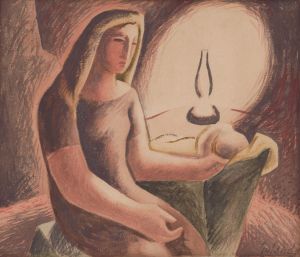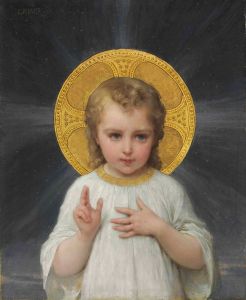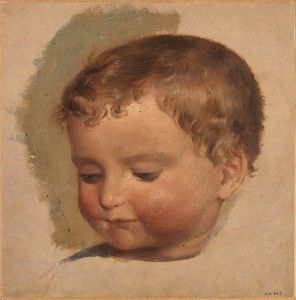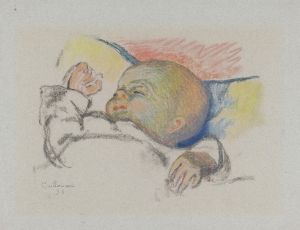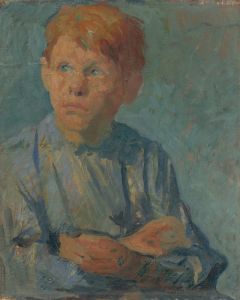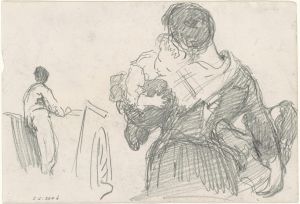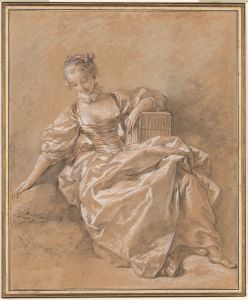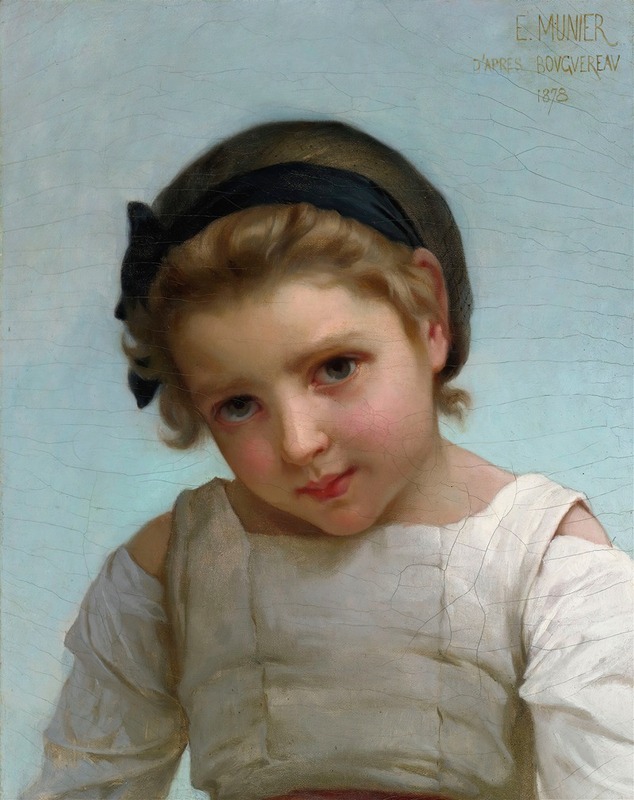
Portrait Of A Young Girl
A hand-painted replica of Émile Munier’s masterpiece Portrait Of A Young Girl, meticulously crafted by professional artists to capture the true essence of the original. Each piece is created with museum-quality canvas and rare mineral pigments, carefully painted by experienced artists with delicate brushstrokes and rich, layered colors to perfectly recreate the texture of the original artwork. Unlike machine-printed reproductions, this hand-painted version brings the painting to life, infused with the artist’s emotions and skill in every stroke. Whether for personal collection or home decoration, it instantly elevates the artistic atmosphere of any space.
Émile Munier was a French academic artist known for his detailed and realistic paintings, often depicting children and domestic scenes. One of his notable works is "Portrait of a Young Girl," which exemplifies his skill in capturing the innocence and charm of childhood. Munier was born in Paris on June 2, 1840, and he studied at the École des Beaux-Arts under the tutelage of artists such as William-Adolphe Bouguereau, who greatly influenced his style.
"Portrait of a Young Girl" is a testament to Munier's ability to render lifelike portraits with meticulous attention to detail. The painting features a young girl, whose identity remains unknown, portrayed with a serene and contemplative expression. Munier's use of soft, delicate brushstrokes and a light color palette highlights the girl's youthful innocence and purity. The background is typically understated, ensuring that the viewer's focus remains on the subject.
Munier's technique reflects the academic art tradition, emphasizing realism and precision. His works often feature smooth transitions of light and shadow, which add depth and dimension to the figures. In "Portrait of a Young Girl," these techniques are evident in the way the light gently caresses the girl's face, creating a sense of warmth and vitality.
Throughout his career, Munier exhibited his works at the Paris Salon, where he gained recognition for his portraits and genre scenes. His paintings were well-received by both critics and the public, and he became known for his ability to capture the essence of childhood with sensitivity and grace. "Portrait of a Young Girl" is a fine example of his oeuvre, showcasing his talent for creating intimate and emotive portraits.
Munier's work is often compared to that of his mentor, Bouguereau, as both artists shared a similar approach to composition and subject matter. However, Munier's paintings are distinguished by their focus on the simplicity and beauty of everyday life, often featuring children in natural settings or engaged in leisurely activities.
The painting "Portrait of a Young Girl" is part of a broader body of work that reflects Munier's fascination with the themes of childhood and innocence. His paintings are characterized by their warmth and tenderness, inviting viewers to appreciate the fleeting moments of youth. Munier's ability to convey emotion through his art has ensured his place among the notable academic painters of the 19th century.
Émile Munier continued to paint until his death on June 29, 1895. His works remain appreciated for their technical skill and emotional depth, and "Portrait of a Young Girl" continues to be admired for its portrayal of youthful innocence. Munier's legacy endures through his contributions to the academic art tradition and his ability to capture the beauty of everyday life.





